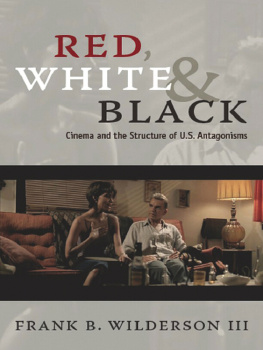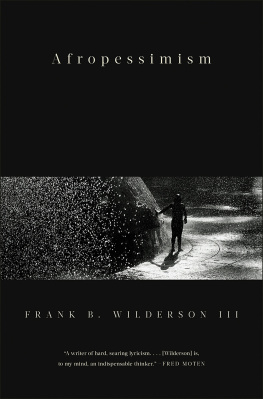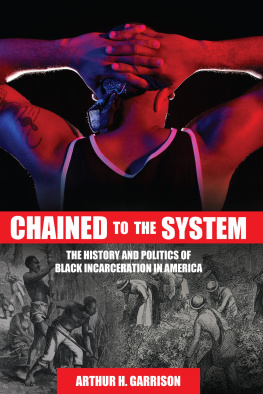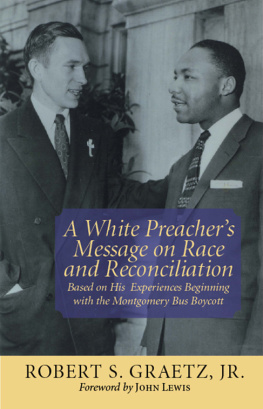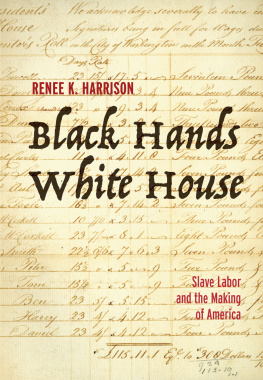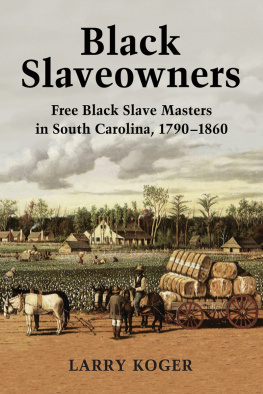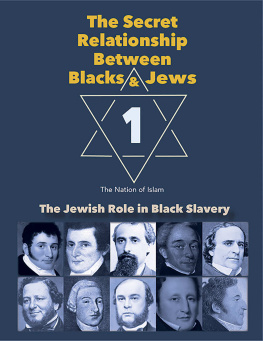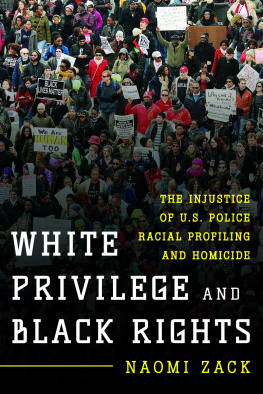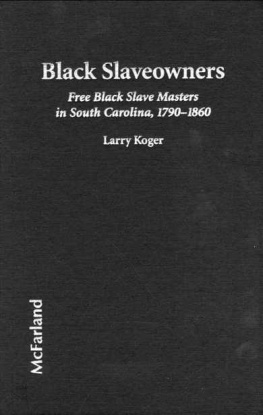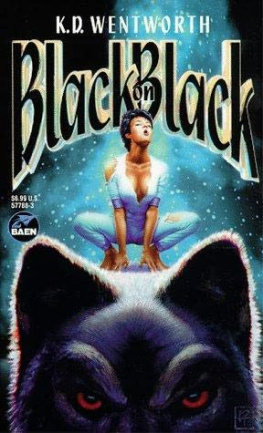ACKNOWLEDGMENTS
STRANGE as it might seem, this book project began in South Africa. During the last years of apartheid I worked for revolutionary change in both an underground and above-ground capacity, for the Charterist Movement in general and the ANC in particular. During this period, I began to see how essential an unflinching paradigmatic analysis is to a movement dedicated to the complete overthrow of an existing order. The neoliberal compromises that the radical elements of the Chartist Movement made with the moderate elements were due, in large part, to our inability or unwillingness to hold the moderates feet to the fire of a political agenda predicated on an unflinching paradigmatic analysis. Instead, we allowed our energies and points of attention to be displaced by and onto pragmatic considerations. Simply put, we abdicated the power to pose the questionand the power to pose the question is the greatest power of all. Elsewhere, I have written about this unfortunate turn of events (Incognegro: A Memoir of Exile and Apartheid), so Ill not rehearse the details here. Suffice it to say, this book germinated in the many political and academic discussions and debates that I was fortunate enough to be a part of at a historic moment and in a place where the word revolution was spoken in earnest, free of qualifiers and irony. For their past and ongoing ideas and interventions, I extend solidarity and appreciation to comrades Amanda Alexander, Franco Barchiesi, Teresa Barnes, Patrick Bond, Ashwin Desai, Nigel Gibson, Steven Greenberg, Allan Horowitz, Bushy Kelebonye (deceased), Tefu Kelebonye, Ulrike Kistner, Kamogelo Lekubu, Andile Mngxitama, Prishani Naidoo, John Shai, and Sbu Zulu.
I returned to the United States in the latter part of 1996 and was fortunate enough to pick up the thread of these debatesbut in a U.S. contextwith political activists who despite their lengthy incarceration, or maybe because of it, had remained true to a vision of comprehensive change. I am speaking of U.S. political prisoners and political exiles living in Cuba. The political prisoners and exiles who have had the greatest impact on my thinking and, subsequently, on the zeitgeist of this book are Nehanda Abiodun, Mumia Abu Jamal, Sundiata Acoli, Charles Sims Africa, Debbie Sims Africa, Janet Holloway Africa, Merle Africa (deceased), Ramona Africa, Safiya Bakhari-Alston (deceased), Herman Bell, Marilyn Buck, Marshall Eddie Conway, Linda Evans, Ruchell Cinque Ma-gee, Jalil Muntaqim, Sekou Odinga, Mutulu Shakur, and Russell Maroon Shoats. They have given generously of their time by way of correspondence with both me and my students. Their perspectives have strengthened our resolve to imbue our research questions with a level of political integrity that is often looked down upon in the academy. Thank you!
My engagement with and critique of Marxism, White feminism, psychoanalysis, postcolonial studies, and film studies would not have evolved into a book were it not for years of challenging exchanges with provocative intellectuals in these fields. Namely, Stephen Barker, Chris Berry, Julia Bryan-Wilson, Thomas Elsaesser, Harun Farocki, Ruth Wilson Gilmore, Renate Holub, Anton Kaes, Steve Martinot, Janet Neary, Joel Olson, Dylan Rodriguez, Mark Sandberg, Donovan Sherman, Kaja Silverman, Charles Sugnet, Gary Whitmer, and Linda Williams.
My three years as a member of a University of California think tank, the Multicampus Research Group on International Performance and Culture, have been a tremendous boon to this project. I have presented chapters and ideas from the book at annual MRG research retreats, as well as to individual group members, and received priceless feedback and editing suggestions. Thank you, Moradewun Adejunmobi, Patrick Anderson, Sue-Ellen Case, Catherine Cole, Susan Foster, Marcela Fuentes, Leo Cabranes Grant, Lynette Hunter, Shannon Jackson, Suk-Young Kim, Daphne Lei, Peter Lichtenfels, Bryan Reynolds, Jon Rossini, John Rouse, Emily Roxworthy, Carol Sorgenfrei, Priya Srinivasan, Shannon Steen, Ngugi wa ThiongO, and Simon Williams!
J. Reynolds Smith, executive editor at Duke University Press and friend, facilitated the swiftest submission-to-initial-acceptance of a book that I have ever experienced or am likely to experience. Though the subsequent peer-review process ran its normal course, the energy and enthusiasm that Reynolds Smith showed for the original manuscript (within two short weeks of receiving it over the transom!) kept my spirits high as the wheels of the peer-review process turned. In addition, I want to acknowledge how kind and helpful the Duke University Press editorial associate Sharon Parks Torian was at every STEP along the way.
What is a Black? A subject? An object? A former slave? A slave? The relational status, or lack thereof, of Black subjectivity (subjectivity under erasure) haunts Black studies as a field just at it haunts the socius. Since my return from South Africa, I have had the good fortune to be involved in an extended dialogue about our relational status, with Black intellectuals whose work is both formidable and humbling. They include Lindon Barrett (deceased), Jocelyn Burrell, Gregory L. Caldwell, Barbara Christian (deceased), Huey Copeland, Zakiyyah Iman Jackson, Ronald Judy, Sara Kaplan, Kara Keeling, Claude-Rheal Malary, David Marriott, Fred Moten, Matt Richardson, Omar Ricks, Akinyele Umoja, Joo C. Vargas, and Jaye Austin Williams.
Adrian Bankhead and Saidiya Hartman read the manuscript and made many helpful suggestions for revisions, but this does not begin to explain my gratitude to them for how they read: as two Black people who looked unflinchingly at the void of our subjectivity, thus helping the manuscript to stay in the hold of the ship, despite my fantasies of flight. And to Raudemar Hernandez Abreu and Alexis Vaubel, a special thanks for reconnecting me with those ancestors who were not afraid to stay with us in the hold of the ship.
The embarrassment of riches of Heinrich Bhmke, Joy James, Amanda Lashaw, and Jared Sexton! What I have said of everyone above I could say of these four and still not have said enough. Heinrich taught me how, in struggle, to embody strategic rigidity but remain tactically flexible. Joy showed me how to maintain ones credentials as an academic without sacrificing ones principles as a revolutionary. In a Gramsci reading group, Amanda was alive to bending Gramsci toward the Black position, and she helped me change my research question from What does it mean to be free? to What does it mean to suffer? Jared taught me that the truth of the paradigm (though not the totality) is not capital and not Oedipus, but anti-Blackness.
Finally, I extend my appreciation to my partner Anita Wilkins, who encouraged me to make the problem my topic during those frustrating moments when seemingly insurmountable problems in theorization threatened to sabotage the forward momentum of the writing. More than that, she shared this intellectual journey with me, for instance, by staying up late many a night to discuss the issues with me, and by incorporating the problems of the book into her own teaching, and then generously sharing her pedagogic experiences with me. And she watched the same four films with me over and over againand never complained. With love and gratitude, thank you.
FRANK B. WILDERSON III is an associate professor of African American studies and drama at the University of California, Irvine. He is the author of Incognegro: A Memoir of Exile and Apartheid (2008), winner of the American Book Award.
Library of Congress Cataloging-in-Publication Data
Wilderson, Frank B.
Red, white & black : cinema and the structure of U.S. antagonisms / Frank B. Wilderson III.
p. cm.
Includes bibliographical references and index.
ISBN 978-0-8223-4692-0 (cloth : alk. paper)

